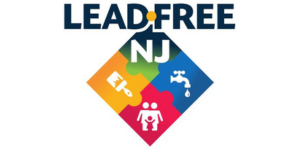Municipalities face a tricky balancing act when it comes to infrastructure improvements: they need to address large, costly projects but have limited resources to fund them. Historically, issuing debt has been the primary means that municipalities are left with to finance critical improvements. However, municipal leaders are reluctant to be the ones responsible for issuing debt, while utilities and public systems are often hesitant to raise rates to cover project costs.
Planning and Governance
Debt is Not a Bad Word: Funding New Jersey’s Infrastructure through Smart Financing
Tuesday, February 18th, 2025Exciting Updates to NJ’s State Plan—Don’t Miss Your Chance to Speak Up!
Tuesday, February 18th, 2025New Jersey Future (NJF) has been a key advocate for the State Plan since our founding in 1987, championing smart growth policies to improve communities and safeguard natural resources. NJF was a member of the consultant team that assisted the Office of Planning Advocacy with the update to the State Plan. I contributed analysis on multiple subject matter areas addressed in the Plan, including parts of the Research Briefs section, Population and Employment Projections section, and the Lasting changes in the post-COVID world section.
Breaking Down the State Revolving Fund – Recommendations and Changes
Monday, December 2nd, 2024Over the next 20 years, the United States must spend $625 billion to fix, maintain, and improve water infrastructure. According to the US Environmental Protection Agency, New Jersey alone will need to spend at least $12,252,800,000 on drinking water infrastructure and $19,352,000,000 on clean water infrastructure over the next 20 years to make all necessary improvements and repairs.
New Report Digs Deeper into Diversity in Morris and Monmouth Counties
Monday, January 29th, 2024New Jersey is an expensive state, with among the highest housing costs in the country. It is also one of the most segregated states in the nation by both income and race, despite being one of the most racially diverse states overall. A new report from New Jersey Future explores the relationship between the enforcement of housing requirements, housing affordability, and racial and economic diversity, using a comparison between two demographically similar suburban counties—Morris and Monmouth—that followed different trajectories in complying with New Jersey’s affordable housing obligations.
The NJ State Development and Redevelopment Plan is Being Updated – Where and How Should New Jersey Grow? Add Your Voice!
Thursday, October 12th, 2023The State Planning Commission (SPC) is hosting a series of eight webinars in October to gather input on how to update the New Jersey State Development & Redevelopment Plan. Last adopted in 2001, the State Plan provides a comprehensive framework intended to guide future development, redevelopment, conservation, preservation, and restoration efforts in the state of New Jersey.
With Recession in the Forecast, How Prepared is NJ’s Economy for Upcoming Rain?
Thursday, July 20th, 2023As the world slowly but surely emerges from the challenges of the COVID-19 pandemic, all of us are evaluating the new parameters of our state and national economies that have experienced stimulus spending, historic inflation, supply chain disruptions, and high interest rates all in quick succession.
Promoting Integration at the Local Level
Thursday, July 20th, 2023While New Jersey is one of the most diverse states in the nation at the macro level, at the local level it is also one of the most segregated. The state has grown more demographically diverse over the last two decades, but most of its individual towns and neighborhoods are either predominantly white or predominantly non-white, with few places occupying the “diverse” range in between.











